The Suzuki GS850 is universally agreed to be one of the most reliable motorcycles to ever come off of the assembly line. Its low maintenance shaft drive, automatic cam chain tensioner, oil damped rear swing arms, dual-front disk brakes, large gas tank, super comfortable seat and many more unique features, make this sport-touring machine a treasure that lasts to this day. It has enough power to keep up with large modern motorcycles, enough weight to keep the tires down in a strong cross-wind, and it does not hurt that it is an elegant and graceful classic. All that said, this motorcycle in stock condition was in no way capable of handling the task of going around the world without some modifications.
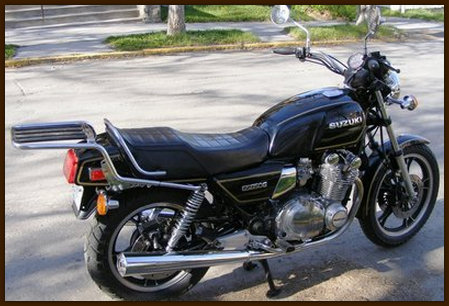
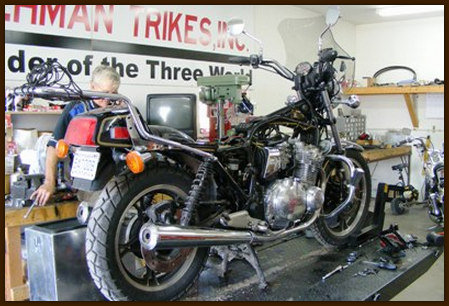
Electrical System
To start, the electrical system had to be revamped as the GS line of Suzuki had some major charging and electrical problems from the get go. Somehow, thirty years ago, Suzuki engineers didn’t compensate for the normal wear and tear on these bikes, and to cut costs they skimped on many standards such as adequate voltage regulator or even the correct size wires. For example, there was not a single relay to be found on the electrical system of this motorcycle. The wirings were way too small to efficiently carry the currents without significant voltage drops. So I ended up rewiring and modifying it correctly, adding five relays to various points of the system, along with an oversized voltage regulator. A relay has been added to the ignition system to direct the full current of the battery to the coils for stronger spark and cleaner combustion. An auxiliary 12V power supply has been added right on the handle bar for running and charging small electronics. A 100W power inverter has been installed under the tail for charging my laptop on the road, complete with a remote switch at the handlebar. Horns have been replaced with new 260 db blasters that scare even me every time I use them. I rewired them to function with the ignition off for security reasons. Tail, head and brake lights have been rewired to be able to be turned off on demand while riding; this is to be able to “ghost ride” (i.e. all lights off) to ultimately escape a pursuer in case of a hostile night chase. The headlight was replaced with all metal housing chrome bucket and an H4 halogen lamp. Turn signals have been replaced with round Suzuki signals for ease of locating spare lenses and at last, two high powered halogen fog lights were installed on the forks more lighting power.
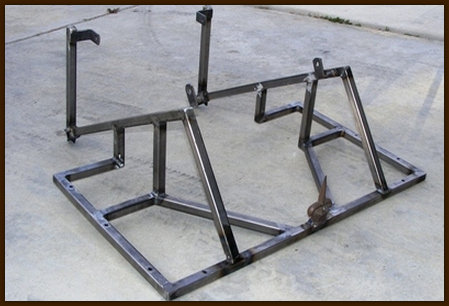
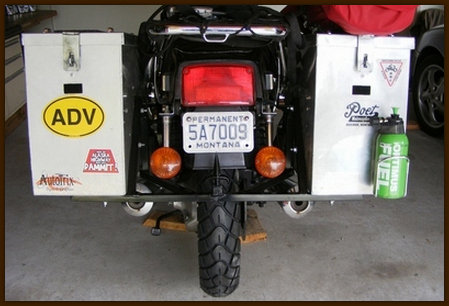
Storage
Since there are no after-market companies making aluminum panniers or racks for these old motorcycles, the panniers had to be custom-ordered and a rack had to be custom-designed and built from mild steel tubing for ease of welding. The mild steel tubing is essential to ensure ease of repairing any damage when traveling abroad as it is easy to weld. The steel tubing rack weighs more than aluminum but is unbelievably strong. All the water and fuel bottles are stored on racks mounted to the outside of the boxes using bicycle water bottles and holders. This allows for more space inside the boxes and ease of access to the water and fuel supply. To maximize the storage capacity two boxes have been modified and mounted in the front of the motorcycle to counterbalance the weight in the back. A fully water-proof, extra-large duffle bag and a smaller dry bag cap off the storage capacity. The two bags are secured by ratcheting straps to the back of the bike. A 35 liter tank bag holds the essential electronics and any items we need easy access to.
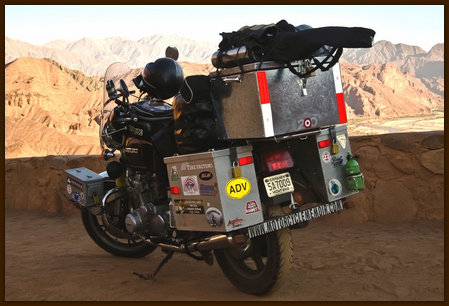
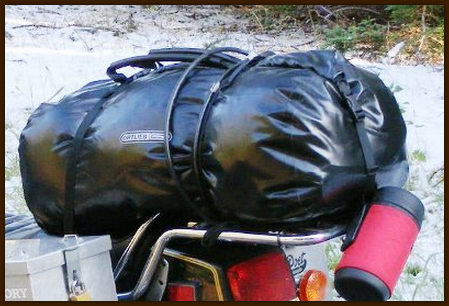
Suspension
The GS850 is not a dirt bike and when it comes to suspension travel it lacks the clearance and softness of more dirt-oriented motorcycles. But it does have the advantage of having a low center of gravity which makes it more stable on uneven ground, especially when it is fully loaded and top-heavy. The rear shocks and front fork springs were modified to most heavy duty, progressive counterparts available. That modification alone boosted the ground clearance by two inches. Two dirt bike fork boots were added to the front to keep the mud, dirt and bugs out of the fork seals and hence extending the life of the seals, as it is a pain in the neck changing fork seals on the road, if you can even find the parts.
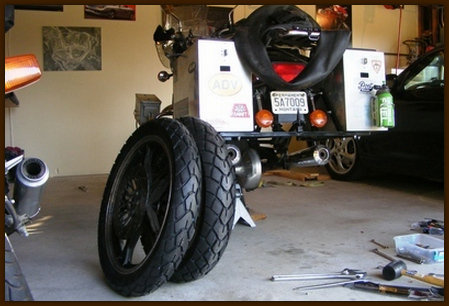
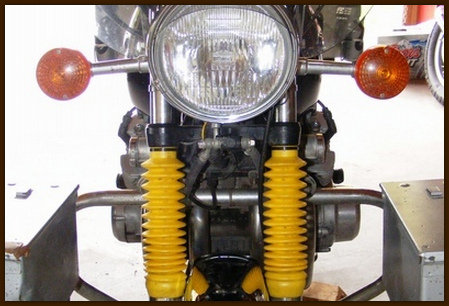
The Powertrain and Chassis
The GS850 sports an 844cc inline four cylinder dual overhead cam engine which cranks out 78 HP at 9000 RPM. Suzuki overbuilt these engines for some strange reason (which I’m mighty thankful for). This engine is easy to work on as it doesn’t have any electronic controllers or a computer of any sort, everything is controlled mechanically. Four carburetors dump fuel into the engine at an average rate of 45 miles per gallon and four pipes carry out the exhaust into two surprisingly quiet mufflers. The frame is a twin down tube full cradle design of heavy steel which makes The GS850 so strong that it actually weighs more than the GS1000 (practically the same identical motorcycle with a bigger engine). The wheels are of magnesium/aluminum alloy strong enough to withstand the repeated pounding of bad roads, yet, light enough for a 30-year old design. The braking power of the GS850 comes from three 10.8” brake disks, two in the front, and one in the back operated hydraulically.
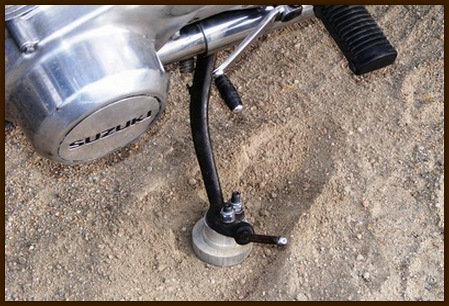
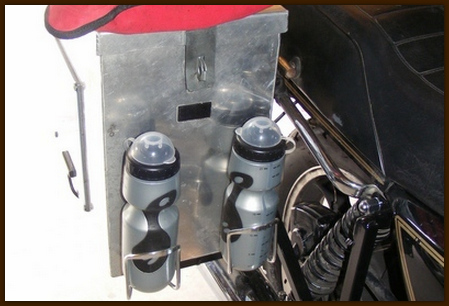
Spare Parts and Tools
Although many things can go wrong on an expedition of this magnitude, I am unable to take precautions against every possible mechanical breakdown. The parts that I am taking with me are just a few important things to get me back on the road in an emergency. Spare parts are: brake and clutch levers, clutch and throttle cables, spark plugs and a single cap, inner tube, fuses and relays. All the extra cables have been routed next to their original counterparts for ease of swapping. My tool kit consists of: box wrenches from 8mm to 17mm (except 15mm and 16mm), 3/8 socket set from 10mm to 19mm (except 15mm and 16mm), six in one screw driver, needle nose and regular pliers, spark plug and shim tools, filler gauge, tire gauge, electrical tape, assorted wires, custom test light, volt meter, butane solder gun, custom made jumper cable, tire patch kit and a file.
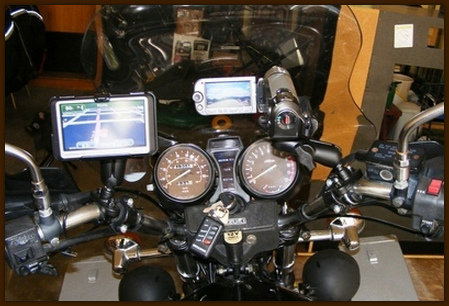
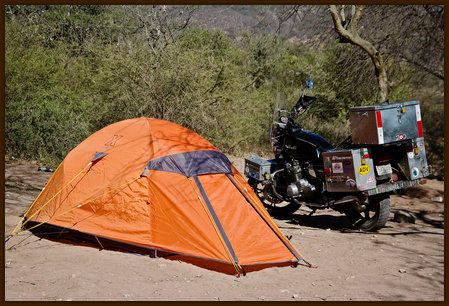
Security and Accessories
All the boxes have been fitted with tamper-proof locks all keyed alike. I use a 6 foot braided cable lock to secure the duffle bag to the seat along with another cable lock for securing the bike to a tree or post. An alarm system has been fitted to this motorcycle with a shock sensor and a loud siren to ward off unwanted attention. The navigation system is a Garmin Nuvi GPS with RAM mounting system which is hardwired to the main battery. For filming, a camera mount has been fitted to the handle bar. Due to the weight of the added accessories, the stock kickstand couldn’t bear the weight of the motorcycle anymore, so it was raise with aluminum disks to correct the height and give the stand extra surface for soft sand. A low profile windshield has been added for keeping the wind and bugs off of my chest. And last but not least, an unbreakable solar panel has been mounted on the right pannier to keep up with the charging system and compensate for the over-stock drainage.


